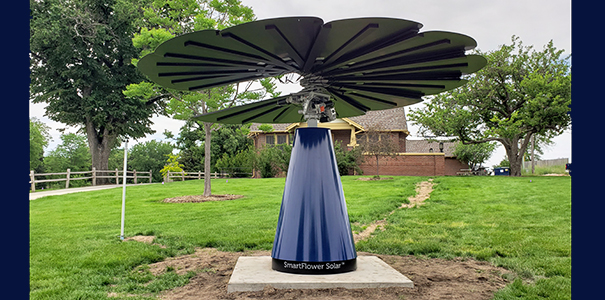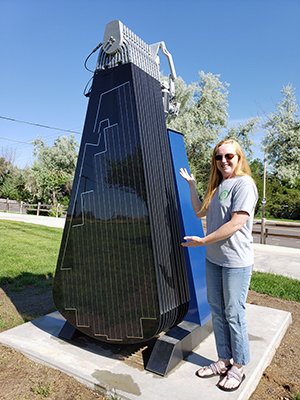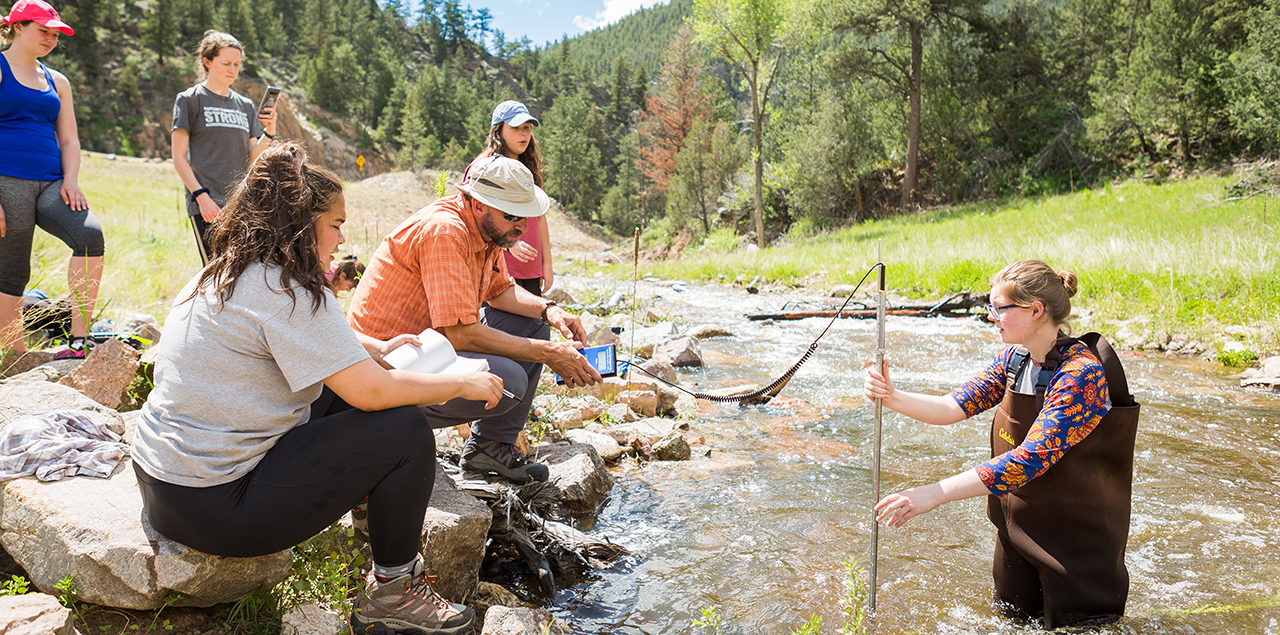
A new installation at the University of Northern Colorado gives new meaning to the term sunflower.
The artificial plant placed at the corner of 14th Avenue and Reservoir Road is bound to get noticed as the university continues to reduce its carbon footprint with innovative approaches.
Nicknamed the Solar Flower, the device was installed on the front lawn of UNC’s César Chávez Cultural Center last month and provides 2,500 watts of power to meet the majority of the center’s needs. . The life expectancy of the Solar Flower is 25 years and will generate a total of 125,000 kilowatt-hours (kWh) during that time, which is 5,000 kWh per year.
Mimicking a blooming flower, it automatically opens its circular array of solar panels and tracks the sun throughout the day for maximum exposure. It is designed to close in case of threatening weather to protect the solar panels, such as wind speeds over 30 miles-per-hour. When closed, small brushes clean the panels to ensure dust and other particles don’t decrease efficiency.
Watch a timelapse of the Solar Flower in action:
 UNC’s Student Leadership for Environmental Action Fund (LEAF) committee, made up entirely
of students, led the effort to select and purchase the Solar Flower to “reduce our
campus’s carbon footprint by utilizing renewable energy and offsetting our fossil
fuel emissions,” said Emmy Scott, a junior double-majoring in Environmental and Sustainability
Studies and Business Management as well as Student LEAF’s grant coordinator.
UNC’s Student Leadership for Environmental Action Fund (LEAF) committee, made up entirely
of students, led the effort to select and purchase the Solar Flower to “reduce our
campus’s carbon footprint by utilizing renewable energy and offsetting our fossil
fuel emissions,” said Emmy Scott, a junior double-majoring in Environmental and Sustainability
Studies and Business Management as well as Student LEAF’s grant coordinator.
The Chávez center was chosen because of the building’s size and location that provided accessibility for the installation and visibility for the community to learn more about solar energy.
“I believe UNC is the first university to have a SmartFlower west of the Mississippi, but definitely in and west of Colorado,” said Patrick Honegger, owner of Green Force Electric who installed the device. “Outside of being sustainable, UNC’s involved in showing people what solar can be and how it can look.”
The project was funded through student fees that are automatically allotted to Student LEAF ($1 per enrolled credit, and up to $10 per student per semester). View other projects that were initiated through Student LEAF.
“The overall goal with the project is to offset the energy that the Chávez center uses with renewable energy, while encouraging and empowering students to learn about transforming campus with innovative technology, such as the Solar Flower,” said Scott.
The Solar Flower is the latest in a number of solar projects initiated at UNC. Sustainability has a long history on campus that has largely been driven by students, faculty and staff. Other initiatives at UNC include:
- Working with McKinstry, an energy construction and engineering company, through energy
retrofits and a conservation program called powerED, UNC was presented with an award from Xcel Energy in April for most energy saved using a self-directed program. Results of the combined
efforts since July 2016:
- Over $2 million of cumulative cost avoidance against a weather-adjusted baseline
- 32% energy and water-savings per year
- Carbon reduction of 27,428 metric tons of carbon dioxide equivalent (mtCO2e)
- Installation of solar array on Parsons Hall later this summer that’s expected to produce 4.7 million kWh of electricity overall, saving UNC an estimated $176,500 over the life of the system.
- Implementation of numerous energy and water-conservation projects including light and equipment upgrades, building and irrigation controls, low-flow technologies, recycling, composting, green cleaning, xeriscaping and IT power and printing management.
- Designated as a Tree Campus U.S.A. campus and Bicycle Friendly University.
 In the near future, all of UNC’s solar-powered systems will automatically feed data
into an online dashboard that will be used to see actual energy generation as well
as in meteorology, physics and sustainability classes.
In the near future, all of UNC’s solar-powered systems will automatically feed data
into an online dashboard that will be used to see actual energy generation as well
as in meteorology, physics and sustainability classes.
The students involved in writing the original proposal include: UNC graduate Katie Fletcher, former Student LEAF grant coordinator; Marie Lee, former Green Team director who led the effort in planning the installation in 2018 (image at right); and Scott, who wrote the official proposal for the project. Tom Giggy, supervisor in the UNC Utility Systems Conservation’s Electrical Shop, the UNC Landscaping and Grounds Department, and the rest of the installation team were also involved in this project’s success.
Learn more:
—Produced by Katie-Leigh Corder.
More Stories
-
Turning a New LEAF with Composting
Reduciendo el desperdicio a través de la composta
-
Sprouting New Landscape to Save Around 2 Million Gallons of Water Per Year
Este artículo no está en español.
-
Networking with Climate Experts in the Arctic Circle
Este artículo no está en español.
-
UNC Collaborates on Regional NSF-Funded Initiative on Climate Resilience
Este artículo no está en español.





